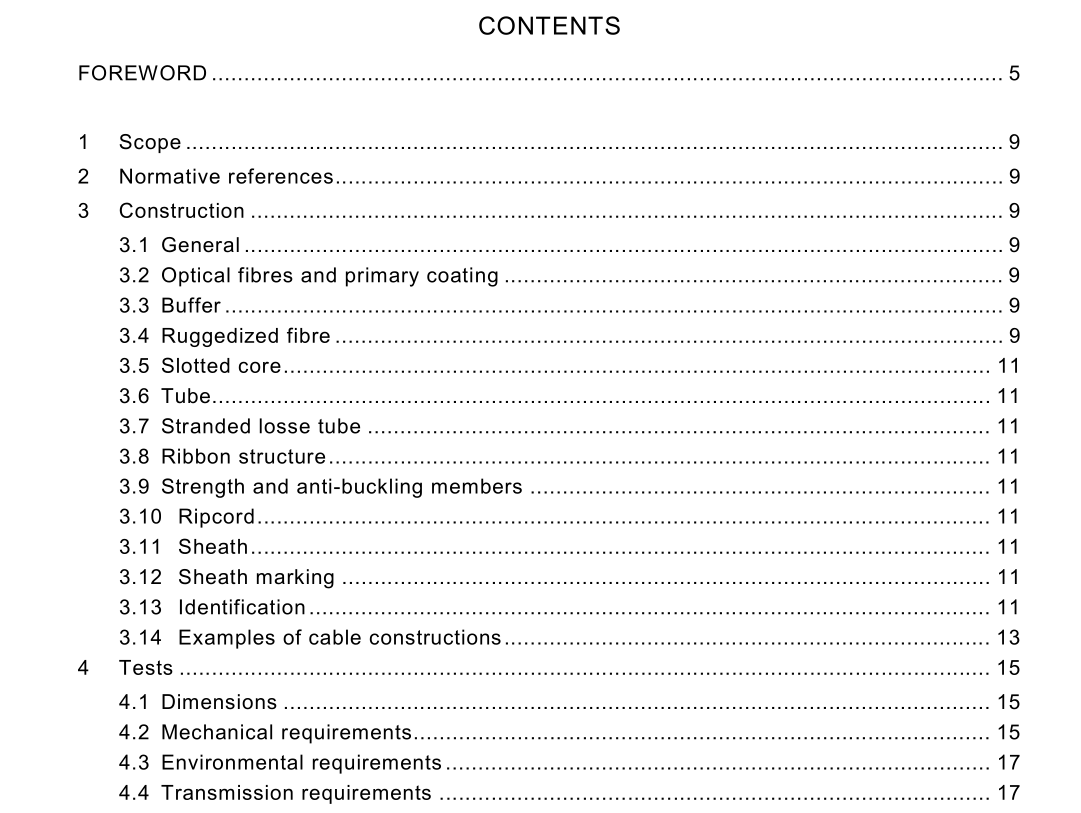IEC 60794-2 pdf download

IEC 60794-2 pdf download.Optical fibre cables
1 Scope
This part of IEC 60794 is a sectional specification. It gives the requirements that apply to optical fibre cables for indoor use with applications such as transmission, telephone and data processing equipment and communication and transmission networks.
2 Normative references
The following referenced documents are indispensable for the application of this document. For dated references, only the edition cited applies. For undated references, the latest edition of the referenced document (including any amendments) applies. They complete the normative references already listed in the generic specification (IEC 60794-1-1, Clause 2, and IEC 60794-1-2 (Clause 2). IEC 60304:1982, Standard colours for insulation for low-frequency cables and wires IEC 60332-3-24:2000, Tests on electric cables under fire conditions – Part 3-24: Test for vertical flame spread of vertically-mounted bunched wires or cables – Category C
3 Construction
3.1 General None. 3.2 Optical fibres and primary coating The optical fibre and fibre primary coating shall conform to the requirements of IEC 60793-2. 3.3 Buffer The buffer, if any, shall consist of a suitable material applied loosely or tightly over the coated fibre. The interstices between the coated fibre and loose buffer can be filled with a suitable and easily deformable material. The buffer shall be easily removable. 3.4 Ruggedized fibre Further protection can be provided to tight secondary coated fibres by surrounding one or two with non-metallic strength members within a sheath of suitable material. Slotted core The slotted core is obtained by extruding a suitable material with a defined number of slots, providing helical or SZ configuration along the core. One or more primary coated fibres or optical elements such as ribbons or fibre bundles are located in each slot. 3.6 Tube If the fibres are deployed in a tube, one or more individual primary coated fibres or ribbons are packaged (loosely or not) in a tube construction which may be filled. The tube may be reinforced with a composite wall. 3.7 Stranded loose tube None. 3.8 Ribbon structure If the fibres are deployed in the form of a ribbon, the ribbon structure shall conform to 6.5 and 8.2.3 of IEC 60794-3. Fibres shall be formed into units of typically two, four, six, eight, or 12 fibres each. The fibres within the units shall remain parallel and not cross. 3.9 Strength and anti-buckling members In general the cable shall be designed with sufficient strength members to meet installation and service conditions so that the fibres are not subjected to strain in excess of limits agreed between the customer and the manufacturer. The strength and/or anti-buckling members may be either metallic or non-metallic and may be located in the cable core and/or under the sheath and/or in the sheath.3.10 Ripcord None. 3.11 Sheath The cable core shall be uniformly covered with a protective sheath. 3.12 Sheath marking If required, the cable shall be marked as agreed between the customer and the manufacturer. 3.13 Identification NOTE The fibre, tube and sheath colour codes that follow are examples of possible standard colour identification systems. The final decision on the acceptable system is taken by the user (agreement between the customer and the manufacturer). The coated fibre or buffer shall be distinguishable by means of colour coding or positioning. Cable tubes shall be distinguishable by means of numbering or colour coding. Standard colours shall be used, as near as possible (reasonable match) to IEC 60304. The colours for fibres are given in Table 1 and the colours for tubes are given in Table 2. The cable sheath shall be colour coded or alternatively, a printing in the sheath indicate the fibre type, for example, G50/125 for multimode fibre with 50 µm core diameter. The colours for sheaths are given in Table 3.









